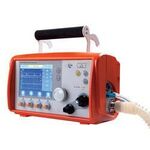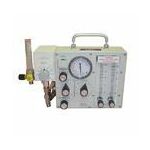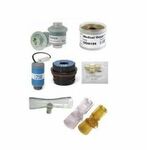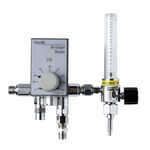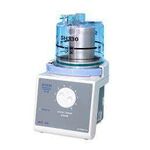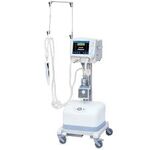Ventilator Machine
Description of Ventilator machine:
A ventilator machine is a life-support system that helps individuals who are unable to breathe on their own. It works by mechanically pumping air into the lungs of patients who are critically ill and cannot breathe on their own, such as those with severe COVID-19, acute respiratory distress syndrome (ARDS), chronic obstructive pulmonary disease (COPD), and other respiratory failure. A ventilator works by delivering breaths of air or oxygen into the lungs of the patient through a tube inserted into the windpipe (endotracheal tube) or through a mask that covers the mouth and nose. The ventilator can control the flow of air, the amount of air delivered, and the timing of each breath, allowing the patient to rest and recover. Ventilators have been in use for over a century, and the technology has come a long way since then. Today, there are many types of ventilators, each designed for specific patient populations and situations.
Types of Ventilators:
Intensive Care Unit (ICU) Ventilators: ICU ventilators are large, sophisticated machines that are used in critical care units, intensive care units, and operating rooms. These ventilators are equipped with advanced features, such as pressure control, volume control, and synchronized intermittent mandatory ventilation (SIMV), which make them ideal for patients with acute respiratory distress syndrome (ARDS) and other severe respiratory conditions.
Portable Ventilators: Portable ventilators are small, lightweight machines that are designed for patients who need mobility and can be easily transported from one location to another. These ventilators are equipped with basic ventilation modes, such as continuous positive airway pressure (CPAP) and bi-level positive airway pressure (BiPAP), and are ideal for patients with chronic obstructive pulmonary disease (COPD) and other respiratory conditions that require long-term support.
- Pressure-cycled ventilators: These ventilators provide a set pressure limit, and the ventilator cycles between delivering pressure and allowing the patient to exhale.
- Volume-cycled ventilators: These ventilators provide a set volume of air for each breath, regardless of the patient's lung compliance.
- Time-cycled ventilators: These ventilators deliver a breath at a set time interval, regardless of the patient's respiratory efforts.
- Hybrid ventilators: These ventilators use a combination of pressure, volume, and time-cycling to deliver breaths to the patient.
- High-frequency oscillatory ventilators: These ventilators deliver very small, rapid breaths to the patient at a high frequency, typically greater than 300 breaths per minute.
- Bi-level positive airway pressure (BiPAP) machines: These machines provide both inspiratory and expiratory pressure support, and are often used for patients with sleep apnea or chronic obstructive pulmonary disease (COPD).
- Non-invasive positive pressure ventilation (NIPPV) machines: These machines provide support through a mask or nasal prongs, without the need for invasive mechanical ventilation.
Functions of a Ventilator Machine:
A ventilator machine is a medical device that assists with breathing by delivering oxygen and removing carbon dioxide from a patient's lungs. Some of the functions of a ventilator machine include:
- Providing a controlled supply of oxygen to the patient's lungs
- Delivering a preset amount of air pressure to keep the patient's airways open
- Regulating the patient's breathing rate and volume
- Adjusting the level of positive end-expiratory pressure (PEEP) to help keep the lungs inflated
Monitoring the patient's breathing and adjusting settings as needed to maintain appropriate oxygen and carbon dioxide levels in the blood.
Maintaining an Open Airway:
The most critical function of a ventilator machine is to maintain an open airway for patients who are unable to breathe on their own. The ventilator machine uses a breathing tube that is inserted into the patient's trachea and connected to the machine. The machine then pumps air into the lungs through the breathing tube, ensuring that the patient's airway remains open and clear.
Providing Adequate Oxygen to the Body:
Ventilator machines are equipped with oxygen tanks that allow patients to receive the right amount of oxygen that they need to stay alive. The machine automatically adjusts the amount of oxygen delivered to the patient based on their specific needs and condition.
Preventing Lung Injury:
Ventilator machines help prevent lung injury by controlling the pressure and volume of air that is pumped into the lungs. The machine adjusts the pressure and volume to prevent over-inflation of the lungs, which can lead to lung
Top Brands and Models of Ventilator Machines:
Philips Refurbished Trilogy 100: The Philips Respironics Trilogy 100 is a popular non-invasive ventilator machine that is suitable for both hospital and home use. It has several features, including adjustable pressure support, auto-adaptive technology, and a portable design.
Medtronic Puritan Bennett 980: The Medtronic Puritan Bennett 980 is an invasive ventilator machine that is suitable for critically ill patients. It has several features, including automatic leak compensation, variable flow sensitivity, and a touchscreen interface.
Hamilton Medical C1: The Hamilton Medical C1 is a compact and portable ventilator machine that is suitable for both invasive and non-invasive ventilation. It has several features, including automatic ventilation modes, advanced monitoring, and a user-friendly interface.
Drager Evita Infinity V500: The Drager Evita Infinity V500 is an invasive ventilator machine that is suitable for critically ill patients. It has several features, including adaptive lung protection, advanced monitoring, and an ergonomic design.


